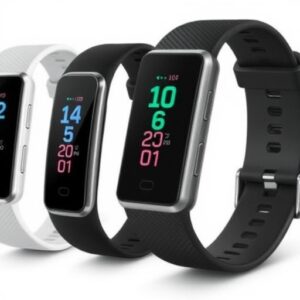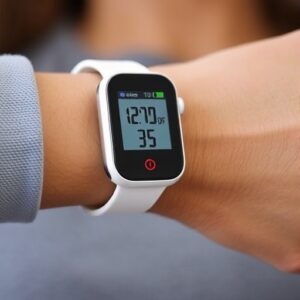As an athlete, you’re no stranger to the importance of maintaining peak physical performance. But did you know that exercise has a significant impact on your blood sugar levels? Whether you’re training for a marathon, hitting the gym for strength training, or simply staying active, understanding how exercise affects your blood sugar is crucial for optimizing your performance and ensuring your overall health.
Blood sugar tracking is a valuable tool for athletes, especially those with diabetes or insulin resistance, to ensure their blood glucose levels stay within a safe range before, during, and after exercise. In this post, we’ll explore how exercise influences blood sugar levels and why blood sugar tracking is essential for athletes.
How Exercise Affects Blood Sugar Levels
Exercise has a direct and powerful impact on your blood sugar levels, and the effect can vary based on the type, intensity, and duration of activity. Here’s how exercise typically affects blood sugar:
- Increased Insulin Sensitivity Regular physical activity makes your body more sensitive to insulin, the hormone that helps your cells absorb glucose. This means that after exercise, your body will more effectively utilize insulin, leading to lower blood sugar levels. This effect can last for several hours to days, depending on the intensity and duration of the exercise.
Benefit: For athletes with insulin resistance or diabetes, increased insulin sensitivity can help lower the need for insulin injections or medication.
- Immediate Impact During Exercise When you exercise, your muscles use glucose as fuel, which can lower blood sugar levels. Aerobic exercises like running, swimming, or cycling can cause an immediate drop in blood sugar, while high-intensity interval training (HIIT) may cause your blood sugar to fluctuate more dramatically.
Benefit: This immediate glucose consumption can help athletes regulate their blood sugar levels, but it also means that athletes need to monitor their glucose during exercise to avoid hypoglycemia (low blood sugar).
- The Risk of Post-Exercise Hypoglycemia While exercise can help regulate blood sugar in the short term, it can also lead to hypoglycemia (low blood sugar) several hours after the workout, especially for athletes with diabetes or those who use insulin. This can occur because muscles continue to use glucose to recover post-exercise, even after the activity has ended.
Tip: Blood sugar may drop significantly 4–6 hours after a workout, so it’s important to monitor your levels after exercise and replenish glycogen stores with a balanced post-workout meal or snack.
- Impact of Intensity and Duration
- Low-Intensity Exercise: Activities like walking or light cycling tend to have a more moderate impact on blood sugar. These exercises may lower blood sugar slightly or keep it stable.
- Moderate to High-Intensity Exercise: Running, swimming, or intense weightlifting can cause a significant drop in blood sugar, especially if the body is not fueled properly beforehand.
- Endurance Sports: Long-duration exercise, such as running a marathon or cycling for hours, can lead to both a drop in blood sugar during the activity and an increase afterward due to the body releasing stress hormones like cortisol.
Benefit: Blood sugar levels may increase temporarily as your body releases glucose for energy, but long-term training improves glucose utilization, making it easier to maintain stable levels.
Why Blood Sugar Tracking is Crucial for Athletes
For athletes, especially those with diabetes or other health conditions affecting insulin regulation, tracking blood sugar levels is vital. Here’s why:
- Prevent Hypoglycemia: Blood sugar drops during and after exercise can be dangerous, especially if you’re engaging in high-intensity or prolonged activities. Tracking your levels helps prevent hypoglycemia and keeps you safe during exercise.
- Optimize Performance: Maintaining stable blood sugar levels can prevent energy crashes, which can hinder athletic performance. Blood sugar tracking allows you to identify patterns and adjust your diet or medication to ensure you’re always performing at your best.
- Identify Trends: Tracking your blood sugar allows you to recognize how different exercises or training routines affect your levels. Whether you’re training for a race or following a new workout plan, you can adjust your nutrition, hydration, and insulin needs accordingly.
- Track Recovery: Blood sugar levels can provide insight into how well your body is recovering from exercise. Post-workout dips in blood sugar may indicate that your body needs more glycogen replenishment, while consistently high levels could indicate that your body isn’t using insulin as efficiently.
Tips for Effective Blood Sugar Tracking for Athletes
Here are some key tips to help you effectively monitor your blood sugar while staying active:
- Test Before Exercise: Always check your blood sugar before starting any workout. If your levels are too high (over 250 mg/dL for many people), exercise may be risky because it could further elevate your blood sugar. If they’re too low (below 70 mg/dL), it’s important to raise your levels with a quick source of glucose before exercising.
- Track During Exercise: For longer or more intense workouts, consider checking your blood sugar mid-exercise, especially if you’re engaging in endurance sports or activities that last more than an hour. This can help you prevent hypoglycemia during your workout.
- Monitor After Exercise: After finishing your workout, monitor your blood sugar every 1–2 hours to ensure your levels are stable and that you’re not dipping into hypoglycemia. The recovery phase can last several hours, so staying on top of your glucose levels is essential.
- Fuel Properly: Before and after your workout, fuel your body with the right balance of carbohydrates, proteins, and healthy fats. This helps prevent both hypoglycemia during exercise and hyperglycemia afterward. For long workouts or endurance events, consider consuming small amounts of fast-acting carbohydrates during exercise to maintain stable blood sugar levels.
- Adjust Your Medications or Insulin: If you’re using insulin or medications, consult with your healthcare provider about adjusting doses based on your activity level. Some athletes find they need less insulin during periods of intense training and more during rest periods.
- Stay Hydrated: Hydration plays a major role in blood sugar regulation. Dehydration can lead to elevated blood sugar, so make sure to drink water regularly before, during, and after exercise.
Conclusion: Mastering Blood Sugar for Peak Performance
For athletes, understanding how exercise impacts blood sugar is essential for optimizing performance and maintaining good health. By regularly tracking your blood sugar levels, you can fine-tune your workout routines, nutrition, and medication to avoid blood sugar extremes and stay at the top of your game.
Whether you’re a professional athlete or just love staying active, blood sugar tracking helps you take control of your body and your health. With a little planning and consistency, you can train smarter, stay energized, and achieve your athletic goals with confidence.
At BloodSugarHealthy.com, we’re committed to helping athletes manage their blood sugar levels effectively. Stay tuned for more tips, resources, and expert advice tailored to your health and fitness journey.
This post provides athletes with a detailed guide on how to track their blood sugar levels and how exercise impacts those readings. Let me know if you’d like any edits or additions!





